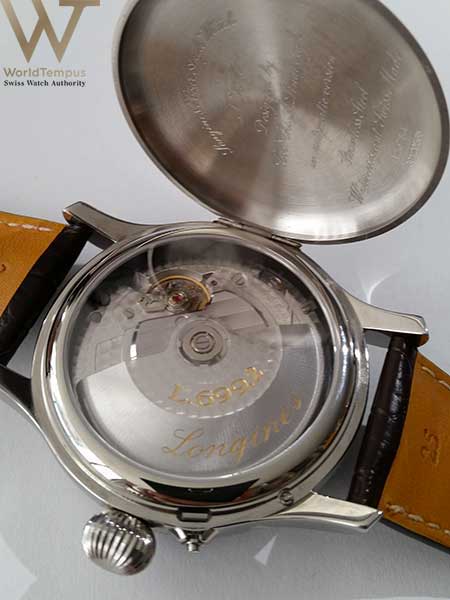The Longines Heritage collection is full to the brim with re-editions of models that are significant not just to the brand itself but also to the history of various fields in which timekeeping has played an important role over the years.
Born from the pioneering age of aviation
One such timepiece is the Hour Angle watch, which was developed by the US subsidiary of Longines, Longines-Wittnauer, in conjunction with Charles Lindbergh, the first person to fly solo across the Atlantic Ocean in 1927. Lindbergh developed the watch as an improvement to the “second setting” watch, also developed by Longines with Lindbergh’s navigation tutor, Navy Captain Phillip Van Horn Weems.

The independently adjustable seconds ring on Captain Weems’ innovation allowed pilots to set the seconds of their watch to a radio time signal without stopping the sweep seconds hand, thus eliminating a margin of error that could amount to several miles. The Hour Angle watch developed by Charles Lindbergh added degrees of arc on three separate scales to this functionality to speed up the calculation of the hour angle, which a pilot could use to determine his longitude.
Wearing the re-edition of the Longines Hour Angle watch transports you to a bygone age. A small pusher on the case between 4 and 5 o’clock opens the hinged back on the large 47.5mm case that reminds you that early pilot’s watches were adapted from pocket watches. You can also feel the reassuring weight of the large oscillating mass as it winds the L699 calibre self-winding movement when the watch is on your wrist, while an oversized “onion skin” crown reminds you that early pilots had to manipulate their watches while wearing thick leather gloves for protection in the cockpit.

Celestial navigation
These physical characteristics are, however, a mere foretaste for the huge mental shock of putting yourself in the position of the early aviation pioneers. Needless to say, there was no GPS around at the time, nor radar. In fact the time zones around the world were only just reaching the point of standardization. John Harrison had solved the problem of longitude some two hundred years earlier with his marine chronometers but these were limited to the sedate pace of an ocean-going vessel. The much higher speeds of the new flying machines meant that calculations based on celestial navigation had to be made much quicker. Longines offers a handy guide as to how the Hour Angle watch works in practice.
Although celestial navigation has since been superseded by modern satellite and GPS technology, it was nevertheless taught to US Navy recruits until 1997 because it has global coverage, it can be used independently of ground aids and, most importantly, it does not give off any signals that could be detected by an enemy. Despite its vintage look, therefore, the Longines Heritage Hour Angle watch still serves an important function. As you glance at the elegant blued-steel hands to read the time, spare a thought for the early pioneers in “avigation” for whom its precision meant the difference between life and death.





